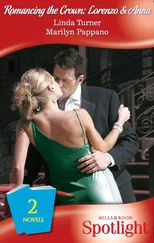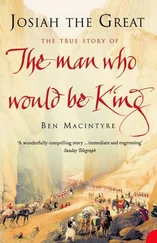A still more revealing insight into the household at Bradgate is given in the contemporary letters of exiled German divine, John of Ulm, to the Zurich pastor Heinrich Bullinger. Although Ulm admired Dorset, and was supported financially by him, Jane’s father emerges from this correspondence as a man of immense vanity. Dorset was forever showing off his ‘eloquent’ Latin, to learned men, ‘with whom he mutually compares his studies’. These included the family’s Cambridge-educated chaplain, James Haddon, and the preacher John Wullocke, who would later play a leading role in the Scottish Reformation. While Jane’s modern biographers frequently describe Frances as the dominant partner in the marriage, it is Dorset’s obsession with his royal connections that is also striking. ‘He told me he had the rank of Prince,’ Ulm confided in Bullinger, adding that, although Dorset didn’t wish to be so styled in public, he was content to be referred to as such in private. Ulm urged Bullinger to flatter Dorset with a dedication to a forthcoming theological work, the fifth part of his Decades , on Christian perfection. Ignoring Frances, despite her importance as Henry VII’s granddaughter, he added that Bullinger should also cultivate Jane, as the heir of the great ‘Prince’.
That autumn, as Ulm waited for Bullinger’s promised fifth Decade , he translated a portion of the pastor’s treatise on Christian marriage from German into Latin for Jane. She responded enthusiastically, retranslating it into Greek and presenting it to her father for the New Year of 1551. ‘I do not think there ever lived anyone more deserving of respect than this young lady, if you consider her family,’ mused Ulm, ‘[or] more learned if you consider her age; or more happy if you consider both.’ 5
It was in late April or early May of 1551 that the copies of Bullinger’s fifth Decade on Christian perfection at last arrived in England. As promised the dedication read: ‘[To] the most illustrious Prince and Lord, Henry Grey, Marques of Dorset…a vigorous maintainer of real Godliness’. 6 Dorset had recently left for Berwick, on the volatile border with Scotland, where he served briefly as Warden of the Three Marches responsible for keeping order in the region. But Ulm followed. He reported back to Bullinger that Dorset had arrived in the north with numerous preachers, as well as 300 cavalry. Ulm had delivered the treatise to him and then headed for Bradgate, where ‘a most weighty and eloquent epistle’ had arrived for Jane, along with another copy of the Decades .
Ulm arrived in Leicestershire on 29th May, and spent the following two days, ‘very agreeably with Jane, my Lord’s daughter, and those excellent and holy persons Aylmer and Haddon [the chaplain]’. Katherine and Mary Grey were, it seems, elsewhere, as was their mother. The family owned properties from Cumberland in the north to Devon in the south-west and Essex in the east. They could have been visiting any of them, staying with friends or acting as the guests of local towns. Even the six-year-old Mary was now being given gifts from burghers seeking her goodwill. The Chamberlain’s accounts in Leicester that year record payment of ‘4sh and 4d’ for a ‘gallon and a half of wine, peasecod and apples’ for Mary, though the wine was surely destined for others. 7
At Bradgate Ulm found Jane, who had just turned fourteen, anxious to show off her language abilities, and was shown a letter she had written in Greek to Bullinger. It fulfilled all the requirements of the formal style drawn from Greek oration and Ulm was impressed by its maturity. Jane was encouraged to write several further letters to Bullinger over the next two years. They resemble the correspondence of the famous Marguerite of Valois, the late Queen of Navarre, with her spiritual mentor, Bishop Briçonnet of Meaux. The Queen, who died in 1549, had been greatly admired for her brilliance and her piety, and she was the perfect model for a Tudor princess such as Jane. But while Jane’s letters are academically impressive, the selfabasement and expansive vocabulary of the high style are unsettling for the modern reader. ‘I entertain the hope that you will excuse the more than feminine boldness in me, who, girlish and unlearned as I am, presume to write to a man who is the father of all learning’, runs one letter from Jane to Bullinger: ‘pardon this rudeness which has made me not hesitate to interrupt your more important vocations with my vain trifles and puerile correspondence.’ 8 Happily, however, the young girl can, sometimes, be spotted through the thick verbiage.
In Jane’s first letter she expressed amazement that Bullinger could find the time, ‘to write from so distant a country, and in your declining age, to me’. Bullinger, at not quite forty-seven, seemed impossibly old to Jane. She was grateful for his ‘instruction, admonition and counsel, on such points especially, as are suited to my age and sex and the dignity of my family’. Jane complained she missed the advice she used to receive from the Strasbourg reformer Martin Bucer, who had died in February. Such religious exiles were the principal source of radical ideas in England, and Jane’s father, along with his friend Parr of Northampton, their leading patrons on the Privy Council. Jane assured Bullinger, she was now reading the Decades every day, gathering ‘as out of a most beautiful garden, the sweetest flowers’. 9 Amongst these were Bullinger’s comments, in the dedication to her father, on the importance of reading the Old Testament in Hebrew, as well as reading the New Testament in Greek. She was now learning Hebrew, she said, and asked ‘if you will point out some way and method of pursuing this study to the greatest advantage’. 10
Ulm was certain that Bullinger would be impressed with Jane’s ‘very learned letter’, but he had also heard some interesting gossip at Bradgate, which he passed on. ‘A report has prevailed and has begun to be talked of by persons of consequence, that this most noble virgin is to be betrothed and given in marriage to the King’s Majesty.’ 11 This claim was an extraordinary one. At that very moment, William Parr, Marquess of Northampton, was in France at the head of a diplomatic mission, with instructions to arrange the formal betrothal of Edward to Henri II’s daughter Elizabeth. Ulm, however, repeated what he had learned at Bradgate to other friends in Europe.
Uncertain that Bullinger would have time for the task of overseeing Jane’s Hebrew, and anxious that Jane’s language skills be developed by someone steeped in the theology of Switzerland, Ulm wrote to a professor in Zurich called Conrad Pellican, asking him to help teach Jane her Hebrew. By way of incentive he told Pellican that he had heard she was one day to be married to King Edward, and raved about Jane’s ‘incredible’ achievements thus far. These included, he noted, the ‘practice of speaking and arguing with propriety, both in Greek and Latin’. 12
Jane, it seems, was being trained in the art of rhetoric: the mastery of language as a means to persuade, edify and instruct. It was an area in which a dynamic mind such as hers was likely to excel. But it was also considered suitable only for a woman being prepared for a significant role, such as that of a King’s wife. ‘Oh! If that event should take place, how happy would be the union and how beneficial to the Church!’ Ulm sighed. 13 He admitted, however, that he nursed a fear that the brilliant religious leader being honed at Bradgate might yet be blasted by a ‘calamity of the times’. People were suffering the economic fallout of Warwick’s deflationary policies and there were major riots again in Leicestershire that summer. It was not revolt, however, but a natural disaster in July that provided the bitterest reminder of just how cruel fate could be. A mysterious disease known as the ‘sweating sickness’ was sweeping England. The epidemics, which vanished altogether after the sixteenth century, would arrive suddenly and disappear quickly. But, while they lasted, they brought illness and death with frightening speed.
Читать дальше












